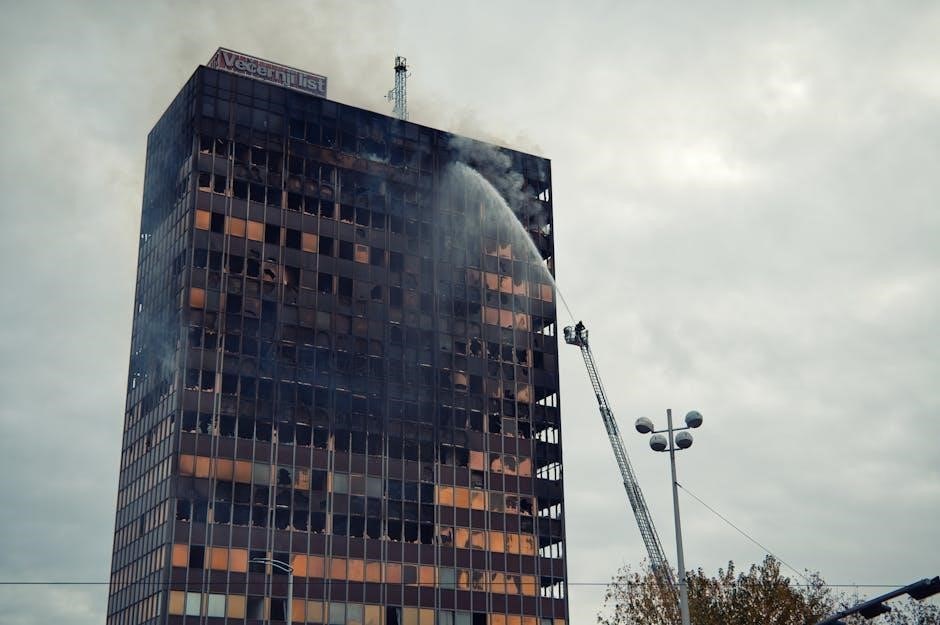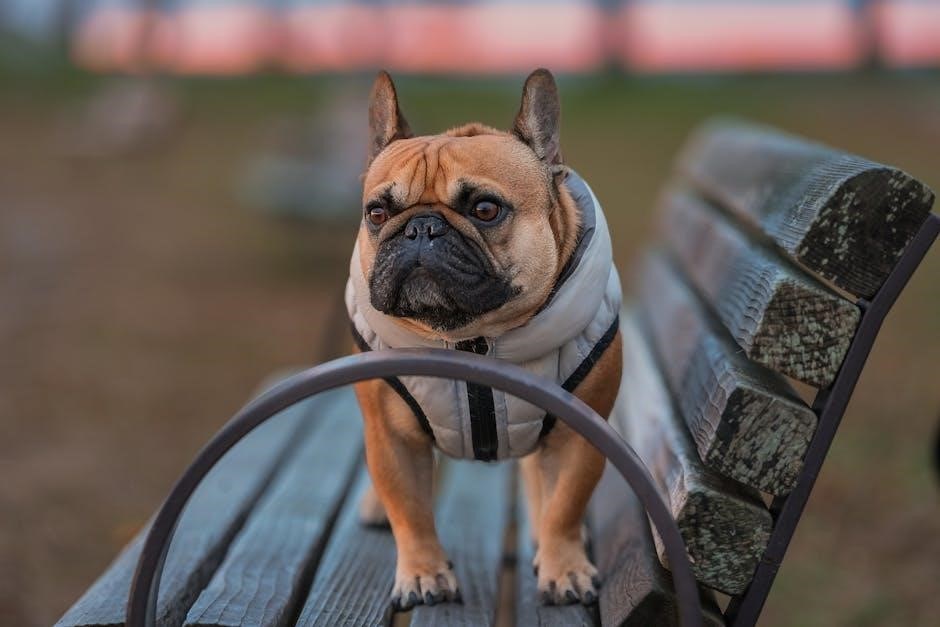Guide coat spray is a crucial tool for automotive bodywork, enabling detailed surface inspection and defect identification during repair processes.
Its primary purpose is to highlight imperfections like scratches, pinholes, and unevenness, ensuring a flawless final finish after painting or bodywork.
Historically, guide coats evolved from simple chalk-based mixtures to sophisticated aerosol formulations, improving visibility and application efficiency.
What is Guide Coat Spray?
Guide coat spray is a temporary coating applied to a vehicle’s surface, primarily during the body repair and refinishing stages. It isn’t a paint itself, but rather a contrasting color designed to reveal imperfections that are otherwise difficult to see with the naked eye. Think of it as a visual amplifier for surface flaws.
Typically, it’s a very thin, easily sandable layer. The contrast between the guide coat and the existing paintwork—whether original or previously applied—highlights areas needing attention. This includes minor scratches, swirl marks from sanding, pinholes in body filler, and inconsistencies in the body’s surface contours. It’s a critical step before applying primer or basecoat.
Modern formulations often come in aerosol cans for convenient application, though traditional spray gun methods are also used. The key is achieving a uniform, light coating that doesn’t obscure the underlying surface but clearly defines its imperfections.
Purpose of Using Guide Coat
The core purpose of using guide coat is to dramatically improve the accuracy and quality of automotive body repairs. It allows technicians to visually identify even the smallest imperfections that would otherwise be missed, leading to a smoother, more professional finish.
Specifically, guide coat reveals inconsistencies in surface preparation. It highlights areas where sanding isn’t level, where body filler needs further work, or where minor scratches remain hidden. This prevents these flaws from being concealed under subsequent layers of paint, which would ultimately compromise the final result.
By providing a clear visual reference, guide coat minimizes rework, saves time, and reduces material waste. It ensures that the surface is perfectly smooth and uniform before applying primer and paint, guaranteeing a high-quality, long-lasting repair.
Historical Context & Development

The concept of a guide coat dates back to the early days of automotive painting, initially utilizing rudimentary methods like applying a thin layer of contrasting chalk dust or powder. These early iterations served the same fundamental purpose – to reveal surface imperfections – but lacked the consistency and ease of modern formulations.
Over time, the development shifted towards liquid-based guide coats, often mixtures of paint and a contrasting color. The introduction of spray technology in the mid-20th century significantly improved application, offering a more even and controllable coating.
The most significant advancement came with the advent of aerosol technology and specialized formulations. Modern guide coats are engineered for optimal visibility, adhesion, and ease of removal, representing a substantial leap from their humble beginnings. Today’s options cater to diverse needs, offering varying colors and compositions for different applications.

Types of Guide Coat Sprays
Guide coat sprays broadly fall into water-based and solvent-based categories, each offering unique properties for different applications and user preferences.
Aerosol cans and traditional spray guns provide distinct application methods, impacting finish control and portability during bodywork.
Water-Based Guide Coats
Water-based guide coats represent a modern evolution in surface inspection technology, prioritizing user safety and environmental responsibility. These formulations utilize water as the primary solvent, significantly reducing the emission of volatile organic compounds (VOCs) compared to their solvent-based counterparts.
This makes them an increasingly popular choice in body shops striving for eco-friendly practices and improved worker health. Water-based guide coats generally offer excellent visibility on various surface colors, effectively highlighting imperfections like pinholes, scratches, and sanding marks. They are particularly well-suited for use with modern basecoat/clearcoat paint systems.
However, water-based options may require more coats for optimal contrast, and can be more susceptible to wash-off if exposed to water before the topcoat is applied. Proper drying time and application technique are crucial for achieving the best results. Despite these considerations, their lower toxicity and ease of cleanup make them a favored choice for many professionals.
Solvent-Based Guide Coats
Solvent-based guide coats have historically been the standard in automotive bodywork due to their exceptional contrast and durability. Utilizing strong solvents, these formulations create a highly visible layer that readily reveals surface imperfections such as scratches, pinholes, and unevenness in body filler or existing paint.
They offer superior adhesion and resistance to being washed off during sanding or preparation processes, making them reliable for complex repairs. However, the use of strong solvents presents significant drawbacks, including high VOC emissions and potential health risks for applicators.
Proper ventilation and respiratory protection are absolutely essential when working with solvent-based guide coats. While offering excellent performance, their environmental impact and safety concerns are driving a shift towards water-based alternatives, despite the continued preference of some professionals for their distinct advantages in certain applications.
Aerosol vs. Traditional Spray Gun Application
Aerosol guide coat sprays offer convenience and ease of use, requiring minimal setup and cleanup, making them ideal for smaller repairs or DIY enthusiasts. They deliver a consistent spray pattern with built-in mixing, ensuring uniform coverage. However, aerosol cans can be less economical for large-scale projects and offer limited control over spray fan and material flow.
Traditional spray gun application, utilizing HVLP (High Volume Low Pressure) or LVLP (Low Volume Low Pressure) systems, provides superior control and customization. Technicians can precisely adjust the spray pattern, fluid flow, and air pressure to achieve optimal coverage and minimize waste.
This method is preferred in professional body shops for larger repairs, offering greater efficiency and a higher-quality finish. While requiring more skill and equipment, spray guns ultimately provide a more versatile and cost-effective solution for experienced users.

Application Techniques
Effective guide coat application demands meticulous surface preparation, precise spray gun settings, and consistent distance/overlap for optimal defect highlighting and repair quality.
Surface Preparation is Key
Achieving a reliable guide coat reading hinges on impeccable surface preparation. Before application, the panel must be thoroughly cleaned, removing all traces of contaminants like wax, grease, silicone, and dust. These residues can repel the guide coat, creating false negatives and masking underlying imperfections.

Existing paintwork should be scuffed with fine-grit sandpaper – typically 320 to 400 grit – to provide a mechanical key for the guide coat and reveal any existing surface flaws.
This scuffing process doesn’t need to remove the existing paint entirely, but it must create a uniformly dull surface.
Following sanding, a wax and grease remover is essential to eliminate any residue created during the abrasion process. A clean, lint-free tack cloth should then be used for a final wipe-down, ensuring a pristine surface ready to receive the guide coat.
Proper preparation guarantees accurate defect identification.
Spray Gun Settings & Patterns
Optimal guide coat application demands precise spray gun settings. Fluid pressure typically ranges between 20-30 PSI, while atomization air pressure should be around 60-80 PSI, though these values can vary based on the spray gun model and guide coat viscosity.
A fan pattern of 10-12 inches is generally recommended, allowing for even coverage without excessive material buildup. The spray gun should be held perpendicular to the surface, maintaining a consistent distance of 6-8 inches.
Employ a smooth, overlapping motion, typically 50-75% overlap with each pass, to avoid streaks or inconsistencies.
Avoid concentrating the spray in one area, as this can create a thick, uneven coat that obscures defects. Multiple light coats are preferable to a single heavy coat.
Consistent settings yield reliable results.
Proper Spray Distance & Overlap
Maintaining the correct spray distance is paramount for effective guide coat application. A distance of 6-8 inches from the surface ensures adequate atomization and prevents the coat from becoming too thick or too thin. Closer distances risk runs and sags, while greater distances can lead to a dusty, uneven finish.
Overlap, the degree to which each spray pass covers the previous one, is equally crucial. A 50-75% overlap guarantees consistent coverage and avoids gaps or stripes. This technique blends each pass seamlessly, creating a uniform layer that accurately reveals surface imperfections.
Consistent speed and movement are vital during application. Slow, deliberate passes are preferred over quick, erratic motions.
Proper technique maximizes defect visibility.

Identifying Defects with Guide Coat
Guide coat spray vividly reveals surface flaws like pinholes, scratches, and uneven areas, allowing for precise repair before the final paint application.
It’s a vital step for quality!

Pinholes & Small Imperfections
Guide coat spray excels at exposing pinholes and minor imperfections that are often invisible to the naked eye, particularly within body filler or primer layers. When applied, the contrasting color settles into these tiny flaws, making them readily apparent. These imperfections, if left unaddressed, can lead to paint adhesion issues, corrosion, and an overall compromised finish.
Pinholes typically arise from trapped air bubbles during the application of body filler or primer, or from surface contamination. The guide coat doesn’t just reveal their presence; it also indicates their size and distribution, guiding the necessary repair work. Addressing these small defects early prevents larger, more costly problems down the line, ensuring a smooth, durable, and aesthetically pleasing final result. Careful sanding and re-application of filler or primer are usually required.
Scratches & Sanding Marks
Guide coat spray is exceptionally effective at revealing scratches and sanding marks left on the vehicle’s surface during preparation work. These imperfections, even if seemingly minor, disrupt the smoothness required for a high-quality paint job. The guide coat fills these subtle contours, creating a visible contrast that highlights their location and severity.
Sanding marks often indicate insufficient refinement of the surface, while scratches can stem from improper handling or abrasive materials. Identifying these flaws with the guide coat allows technicians to precisely target areas needing further attention. Corrective action typically involves further sanding with progressively finer grits, ensuring a perfectly level surface before paint application. Ignoring these imperfections results in a textured or uneven finish, diminishing the overall aesthetic appeal and durability.
Uneven Surfaces & Body Work
Guide coat spray excels at exposing subtle unevenness in body panels, particularly after collision repair or body filler application. Areas where bodywork has been performed often retain slight variations in contour, even if appearing smooth to the naked eye. The guide coat highlights these discrepancies by creating a contrasting layer that accentuates any high or low spots.
This is crucial because even minor imperfections can become dramatically visible after paint application, ruining the final finish. Technicians use the guide coat to pinpoint areas requiring further block sanding or filler application to achieve a perfectly uniform surface. Proper use ensures seamless blending of repaired sections with the original bodywork, resulting in a professional and aesthetically pleasing outcome. Addressing these issues early prevents costly rework and guarantees a durable, high-quality repair.

Guide Coat Colors & Visibility
Guide coat spray comes in various colors; gray, red, and others, each offering unique visibility advantages depending on the underlying paint color and lighting conditions.
Gray Guide Coat – Common Uses
Gray guide coat spray is arguably the most versatile and frequently utilized option in automotive body repair shops due to its broad compatibility with a wide spectrum of paint colors. It provides a neutral contrast against both light and dark surfaces, making it exceptionally effective for identifying subtle imperfections that might otherwise go unnoticed.
Specifically, gray excels at revealing minor scratches, sanding marks, pinholes, and inconsistencies in body filler application. Its subdued tone doesn’t obscure details, allowing technicians to accurately assess the surface preparation quality before applying primer or base coats. This is particularly useful when working with metallic or pearl finishes where visual inspection can be misleading.
Furthermore, gray guide coat is often preferred for initial inspections after bodywork, providing a comprehensive overview of the repaired area’s smoothness and uniformity. It’s a reliable choice for everyday use, offering a balanced combination of visibility and practicality.
Red Guide Coat – High Contrast Applications
Red guide coat spray is specifically chosen for applications demanding maximum contrast, particularly when inspecting darker-colored vehicles or surfaces. Its vibrant hue dramatically highlights even the smallest imperfections against black, navy blue, or deep gray paintwork, making it exceptionally effective at revealing flaws that a gray coat might miss;
This high visibility makes red ideal for identifying swirl marks left by polishing, subtle scratches, and imperfections in the clear coat. Technicians often utilize red guide coat during the final stages of paint preparation to ensure a flawless finish. It’s also beneficial when assessing repairs on textured surfaces where subtle variations can be difficult to detect.
However, due to its strong contrast, red may not be the best choice for lighter-colored vehicles as it can sometimes obscure minor defects. It’s a powerful tool when used strategically for high-contrast scenarios.

Other Colors & Their Specific Advantages
While gray and red are the most common, guide coat sprays are available in other colors, each offering unique benefits. Blue guide coat, for instance, provides excellent contrast on silver and lighter metallic finishes, revealing imperfections that gray might overlook. White guide coats excel on very dark surfaces, offering a stark contrast for detailed inspection.
Yellow guide coats are sometimes preferred for their visibility under certain lighting conditions and can be useful for identifying subtle contours. Black guide coat, though less frequently used, can highlight imperfections on lighter shades, particularly when assessing filler application.
The choice of color depends heavily on the base color of the vehicle and the type of defects being sought. Experimentation with different hues can optimize defect detection and ensure a superior quality repair.

Safety Precautions
Guide coat spray application demands proper ventilation, respiratory protection, and skin/eye safeguards due to solvent content and potential flammability risks.
Always store in a cool, well-ventilated area.
Ventilation & Respiratory Protection
Guide coat sprays, particularly solvent-based varieties, release volatile organic compounds (VOCs) that can be harmful if inhaled. Adequate ventilation is paramount during application; ideally, work within a spray booth equipped with a robust exhaust system to remove airborne particles and fumes.
If a spray booth isn’t available, ensure the work area is exceptionally well-ventilated with open doors and windows, alongside fans to circulate air. However, relying solely on natural ventilation may not be sufficient for prolonged or frequent use.
Respiratory protection is crucial, even with ventilation. A properly fitted respirator equipped with organic vapor cartridges is essential to filter out harmful VOCs. The type of respirator should be selected based on the specific spray’s composition and the level of exposure. Regularly inspect and replace cartridges according to the manufacturer’s instructions to maintain effectiveness. Prioritize your health and safety by consistently using appropriate respiratory gear.
Skin & Eye Protection
Guide coat sprays can cause skin irritation upon contact, ranging from mild dryness to more severe dermatitis. Direct skin exposure should be avoided at all costs. Wearing appropriate skin protection, such as nitrile gloves, is essential during application and cleanup. Cover exposed skin areas with long sleeves and pants to minimize potential contact.
Eye protection is equally critical. Guide coat spray can cause significant eye irritation or even damage if it comes into contact with the eyes. Always wear safety glasses or a full face shield to create a barrier against splashes or overspray.
In the event of accidental skin or eye contact, immediately flush the affected area with copious amounts of water for at least 15 minutes and seek medical attention if irritation persists. Prioritize preventative measures to safeguard your skin and eyes during the application process.
Flammability & Storage
Many guide coat sprays, particularly those solvent-based, are highly flammable. Keep these products away from open flames, sparks, heat sources, and static discharge. Ensure adequate ventilation during application to prevent the buildup of flammable vapors. Avoid smoking or using any ignition sources in the immediate work area.
Proper storage is crucial for maintaining product safety and quality. Store guide coat spray cans in a cool, dry, and well-ventilated area, away from direct sunlight and extreme temperatures. Keep containers tightly closed when not in use to prevent evaporation and contamination.
Always consult the Safety Data Sheet (SDS) for specific flammability information and storage recommendations for the particular guide coat spray product you are using. Follow all local regulations regarding the storage of flammable materials.
Guide Coat vs. Other Inspection Methods
Guide coat excels at revealing subtle surface flaws, offering a cost-effective alternative to lighting boards or dye penetrant testing for detailed bodywork assessment.
Guide Coat vs. Visual Inspection
Visual inspection, while a fundamental first step, often fails to detect subtle imperfections in automotive surfaces. The human eye can be easily deceived by reflections, paint variations, and minor undulations, leading to overlooked defects that compromise the final finish.
Guide coat spray, however, provides a contrasting layer that dramatically highlights these imperfections. By creating a uniform base, it makes even the smallest scratches, pinholes, sanding marks, and uneven areas readily visible. This enhanced visibility is crucial for achieving a high-quality repair.
Essentially, guide coat doesn’t replace visual inspection, but significantly augments it. It transforms subtle flaws into obvious indicators, ensuring thorough preparation and a superior outcome. Relying solely on the eye risks hidden defects resurfacing after paint application, necessitating rework and increased costs.
Guide Coat vs. Lighting Boards
Lighting boards, utilizing focused illumination, are valuable for revealing surface imperfections, but their effectiveness is heavily reliant on the angle of light and the observer’s position. Shadows and glare can easily mask subtle defects, requiring constant adjustments and skilled interpretation.
Guide coat spray offers a more consistent and reliable method for defect detection. It creates a uniform, contrasting surface, eliminating the variability introduced by lighting conditions. Unlike lighting boards, guide coat doesn’t require precise positioning or subjective assessment of shadows.
While lighting boards excel at highlighting larger contours, guide coat excels at revealing minute imperfections – pinholes, light scratches, and inconsistencies in body filler application. They are complementary tools; however, guide coat provides a more definitive and comprehensive assessment of surface quality, ensuring a flawless finish.
Guide Coat vs. Dye Penetrant Testing
Dye penetrant testing is a highly sensitive method primarily used for detecting cracks and porosity in metals, relying on capillary action to reveal subsurface flaws. It’s a destructive testing method, requiring thorough surface preparation and a multi-step process involving penetrant application, dwell time, and developer application.
Guide coat spray, conversely, focuses on surface imperfections in bodywork – scratches, sanding marks, and unevenness – and is non-destructive. It’s a visual inspection aid, quickly highlighting areas needing attention during paint preparation and body repair.
While dye penetrant testing identifies internal flaws, guide coat reveals surface anomalies. They serve different purposes; dye penetrant is for structural integrity assessment, while guide coat is for cosmetic finish quality. Guide coat is faster, simpler, and more suited for routine bodywork inspection, offering immediate feedback on surface preparation.
